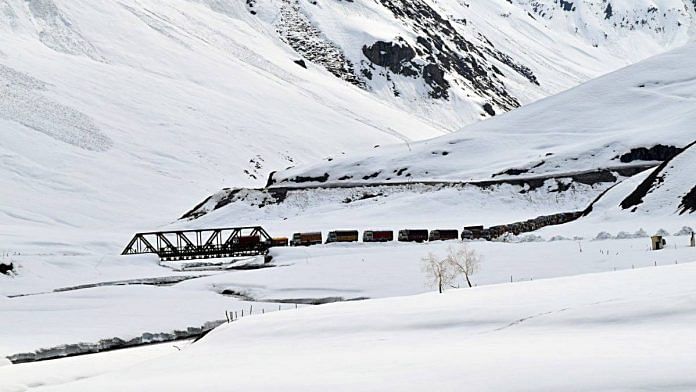New Delhi: A strategically important bridge in the Galwan Valley of Eastern Ladakh has been made “functional” amid the ongoing tensions with China in the region, ThePrint has learnt.
This means that while minor works carry on, vehicles can now pass on the bridge which replaces an already existing wooden structure.
Army sources said that the 60-metre bridge is on the Shyok River and is very close to the confluence of the Shyok-Galwan rivers.
“It links Daulat Beg Oldie (DBO) and is not on the track moving to Patrol Point 14 (PP14) and neither on Galwan river,” a source explained.
Also read: Why the remote Galwan Valley is a flashpoint between India and China
Bridge over river Shyok
The bailey bridge, built on four concrete pillars and comprises of metal trusses (beams), can be used for movement of men and different kinds of vehicles.
It was made functional Thursday and vehicles crossed it as part of trials.
This gives strategic heft to the movement of men and material closer to the Line of Actual Control (LAC).
ThePrint had reported on 12 June that the work on the bridge was on and had sped up amid the ongoing stand-off with China.
India had made it clear to the Chinese that it will carry on with border infrastructure development.
The Print had also reported that China’s main concern in the Galwan Valley was the construction of a bridge.
The bridge is about 7.5 kilometres from the LAC and the construction had started late last year. It is also about 3-4 kilometres away from the spot where Indian and Chinese troops clashed on 15 June.
Sources said that there is no presence of Chinese troops on the Indian side of the Galwan Valley.
China had erected two tents within Indian territory close to PP14, which is at the mouth of the Galwan Valley, ThePrint had reported.
The violent face-off happened when the Chinese did not fully implement the terms of agreement decided upon during a 6 June meeting between 14 Corps Commander Lt Gen. Harinder Singh. At these talks, bot sides had agreed to move back from the area by about 2 kilometres.
Also read: Galwan clash was a result of China trying to build structures across LAC, says PMO







China army is like chinees toys fuss..fuss…and fearfull stabbing behind…and pakistan also…teach them the hard lesson